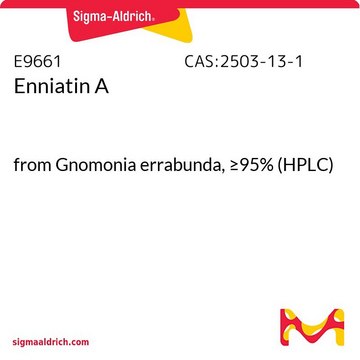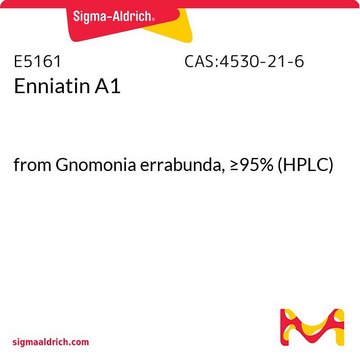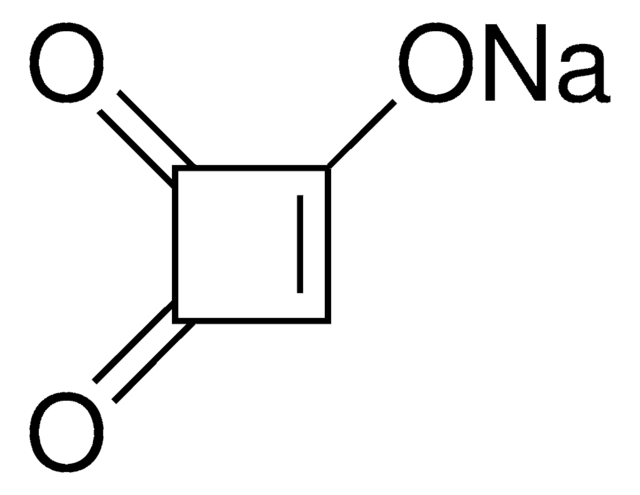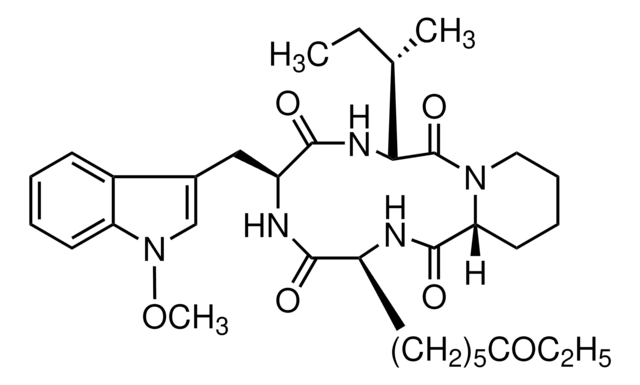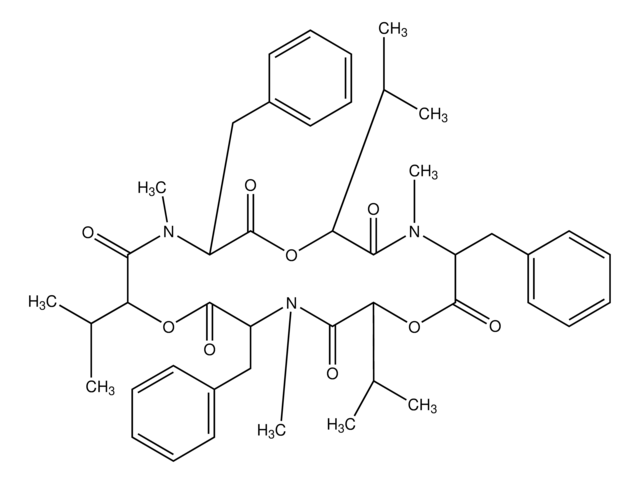E5286
Enniatin B1
from Gnomonia errabunda, ≥95% (HPLC)
Sinónimos:
2-(N-Methyl-L-isoleucine) Enniatin B, 3-Butan-2-yl-4,10,16-trimethyl-6,9,12,15,18-penta(propan-2-yl)-1,7,13-trioxa-4,10,16-triazacyclooctadecane-2,5,8,11,14,17-hexone
About This Item
Productos recomendados
biological source
Gnomonia errabunda
Quality Level
assay
≥95% (HPLC)
solubility
DMSO: 10 mg/mL
ethanol: 10 mg/mL
methanol: 10 mg/mL
storage temp.
−20°C
InChI
1S/C34H59N3O9/c1-16-22(12)25-34(43)46-27(20(8)9)30(39)36(14)23(17(2)3)32(41)44-26(19(6)7)29(38)35(13)24(18(4)5)33(42)45-28(21(10)11)31(40)37(25)15/h17-28H,16H2,1-15H3
InChI key
UQCSETXJXJTMKO-UHFFFAOYSA-N
Application
Biochem/physiol Actions
signalword
Danger
hcodes
Hazard Classifications
Acute Tox. 3 Dermal - Acute Tox. 3 Inhalation - Acute Tox. 3 Oral
Storage Class
6.1C - Combustible acute toxic Cat.3 / toxic compounds or compounds which causing chronic effects
wgk_germany
WGK 3
flash_point_f
Not applicable
flash_point_c
Not applicable
Elija entre una de las versiones más recientes:
¿Ya tiene este producto?
Encuentre la documentación para los productos que ha comprado recientemente en la Biblioteca de documentos.
Los clientes también vieron
Nuestro equipo de científicos tiene experiencia en todas las áreas de investigación: Ciencias de la vida, Ciencia de los materiales, Síntesis química, Cromatografía, Analítica y muchas otras.
Póngase en contacto con el Servicio técnico